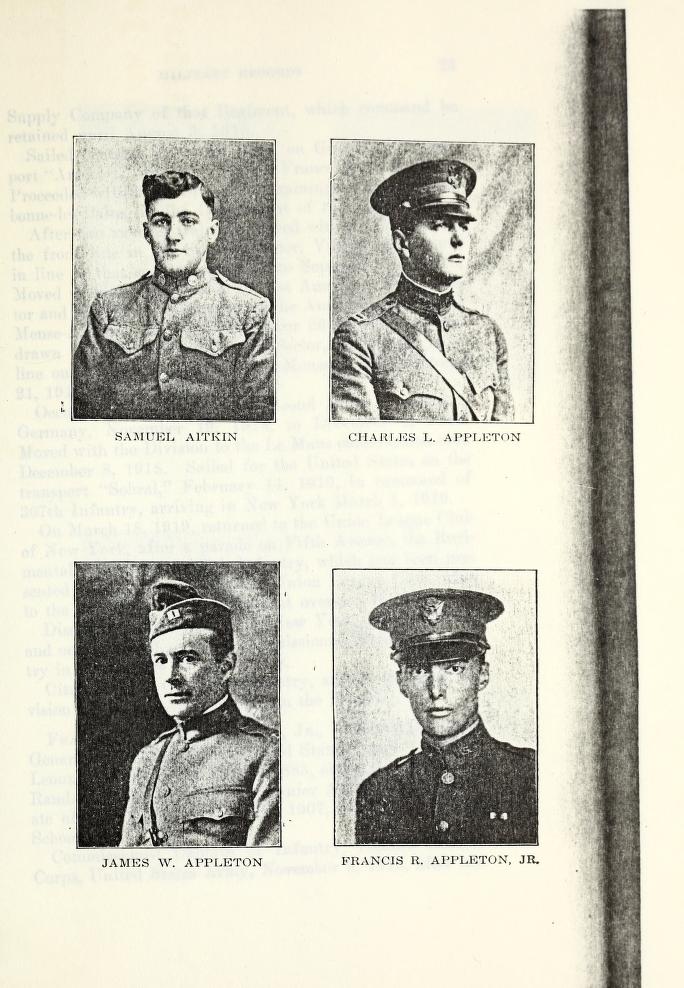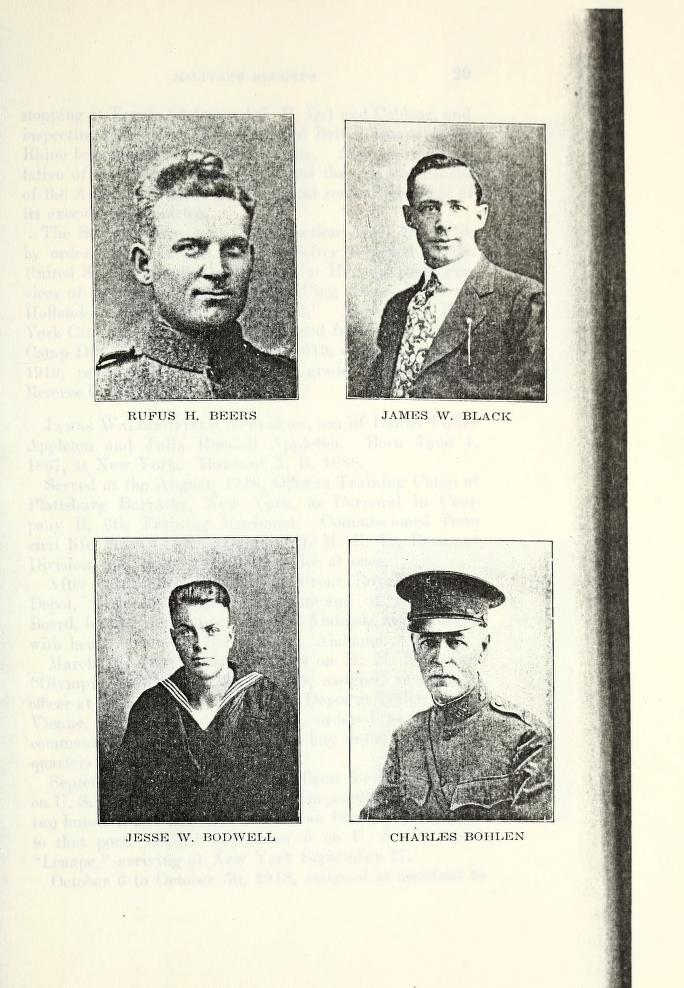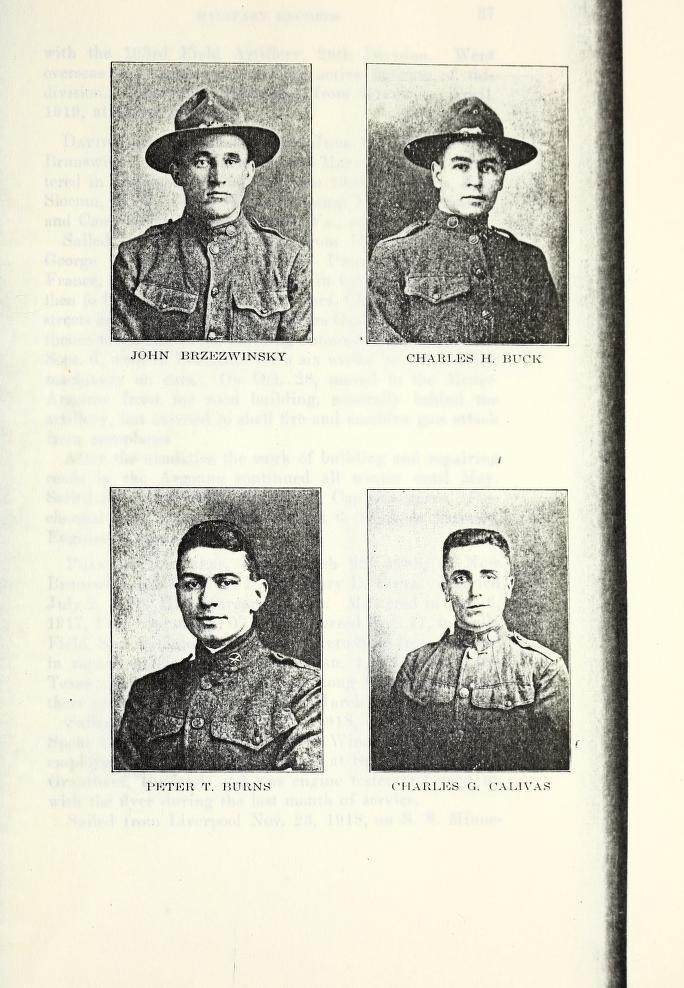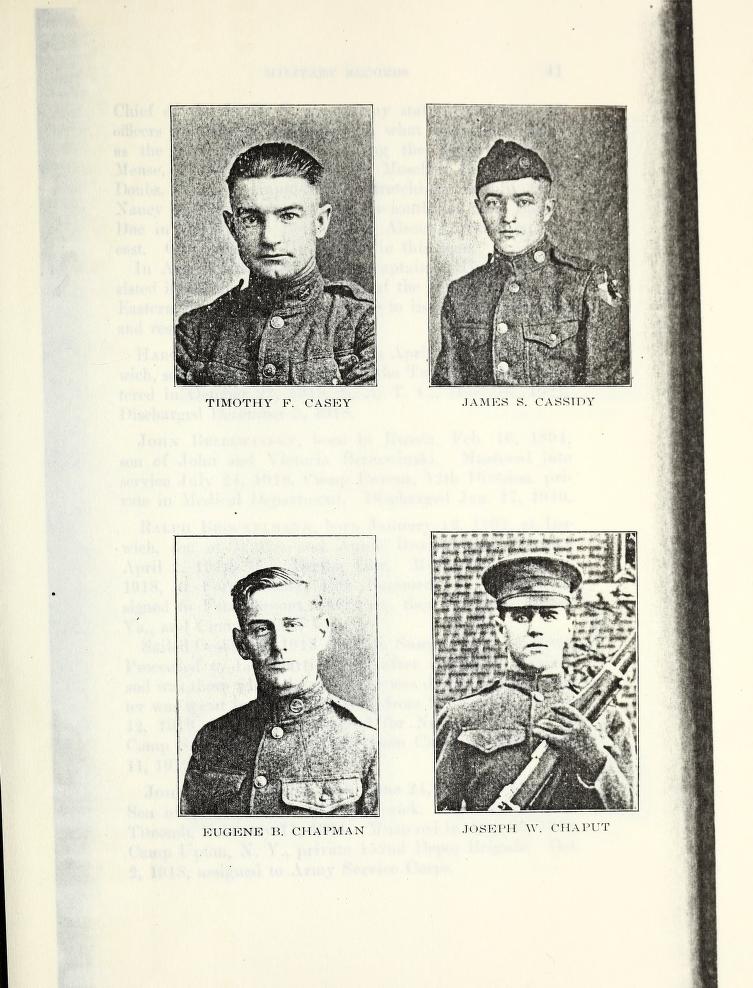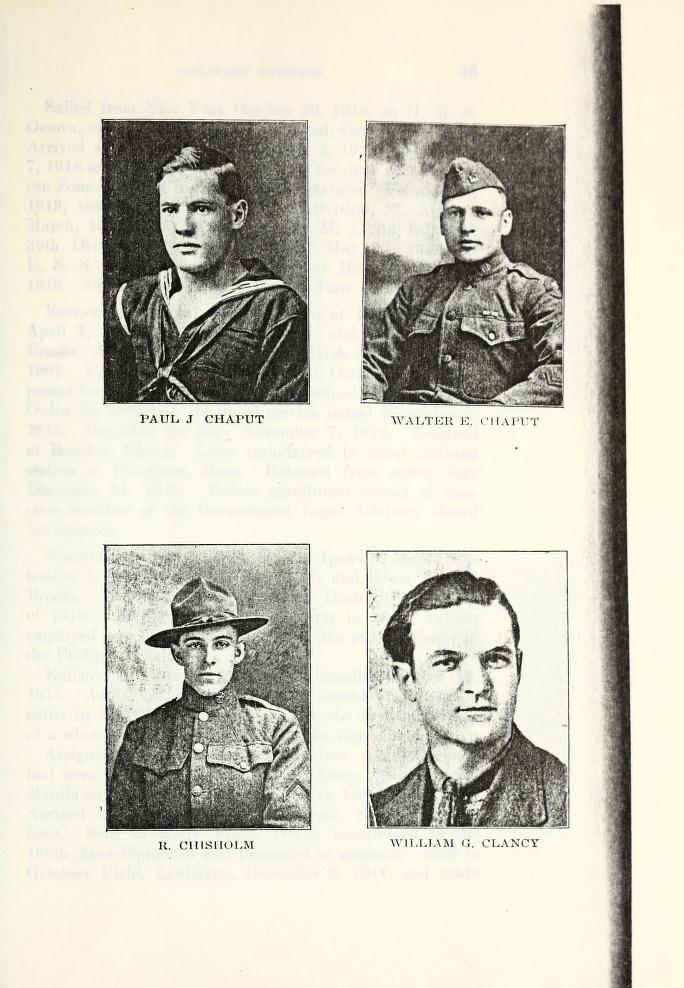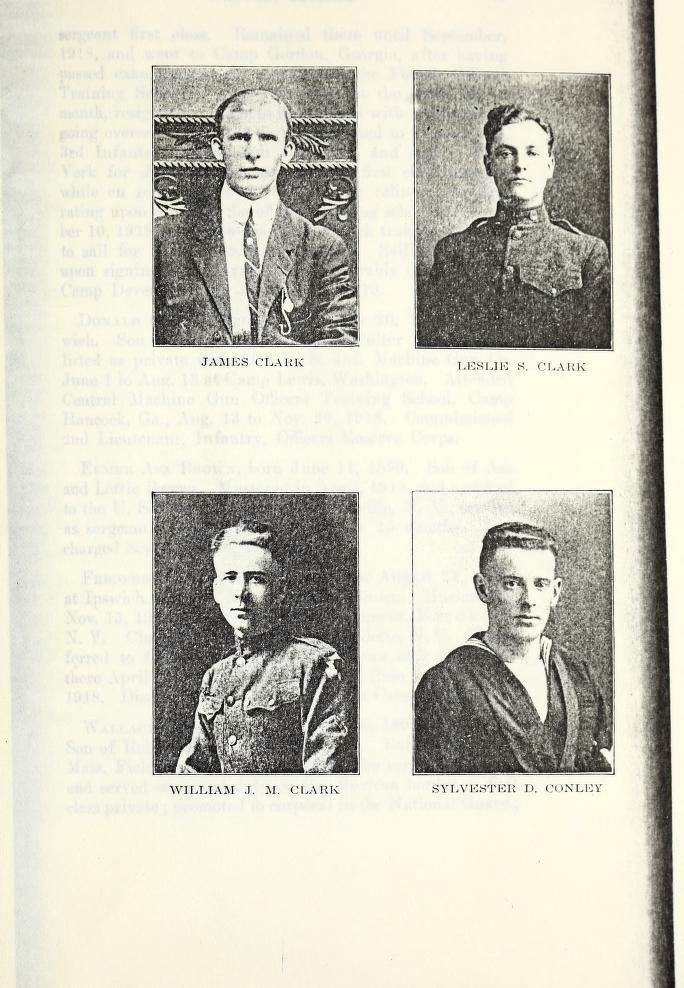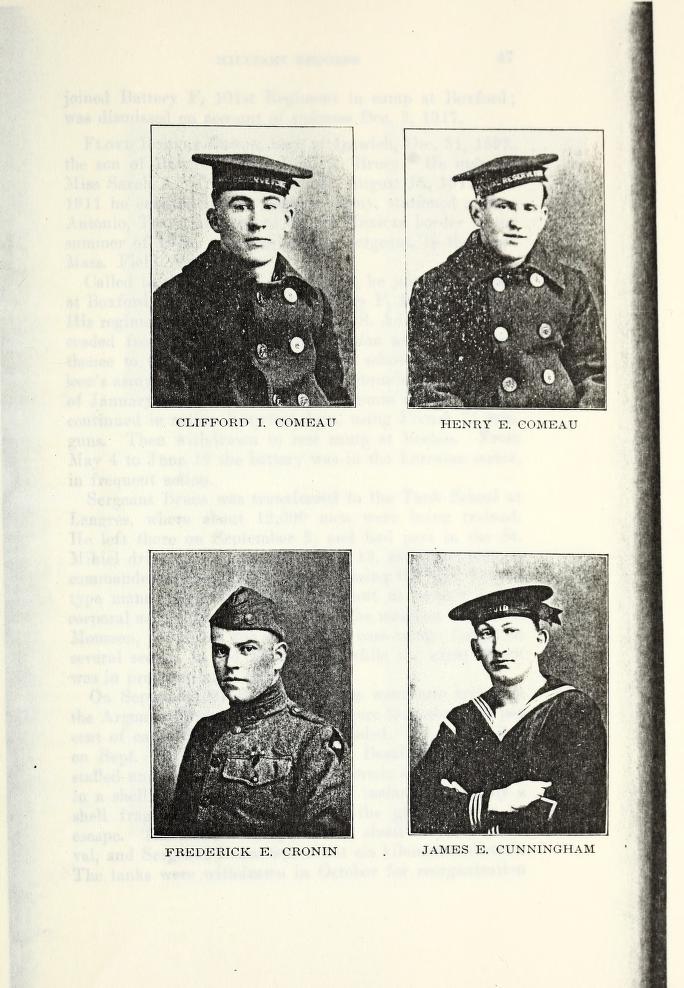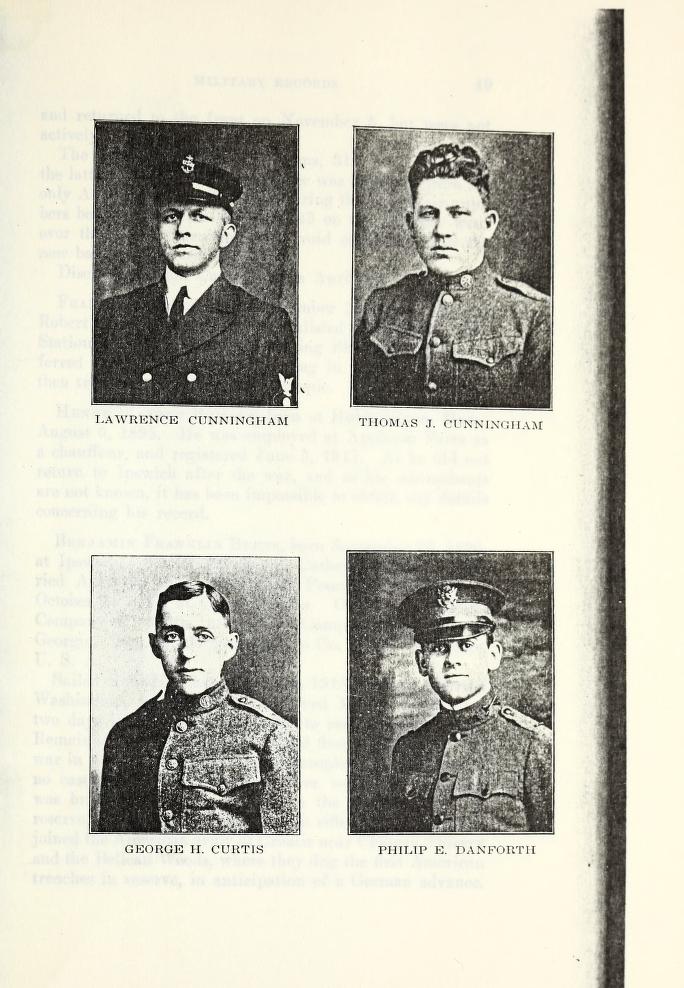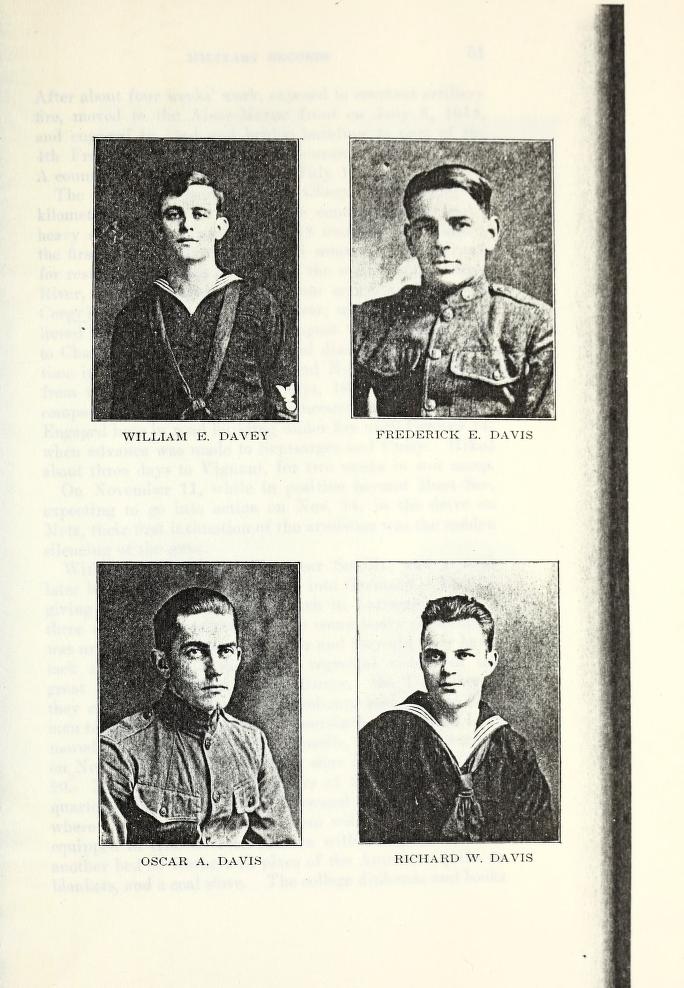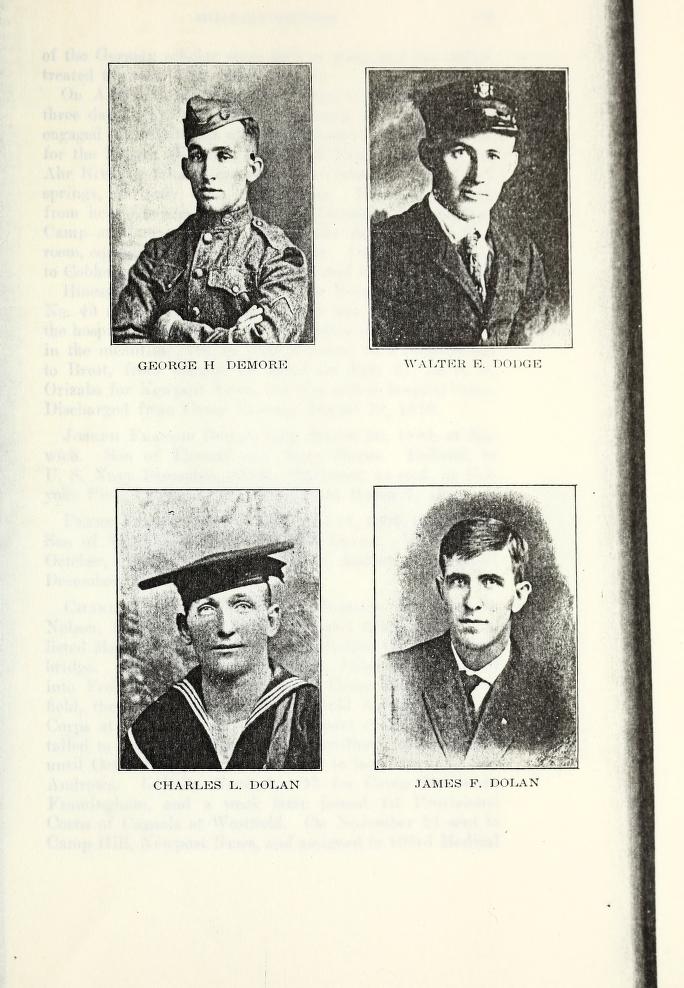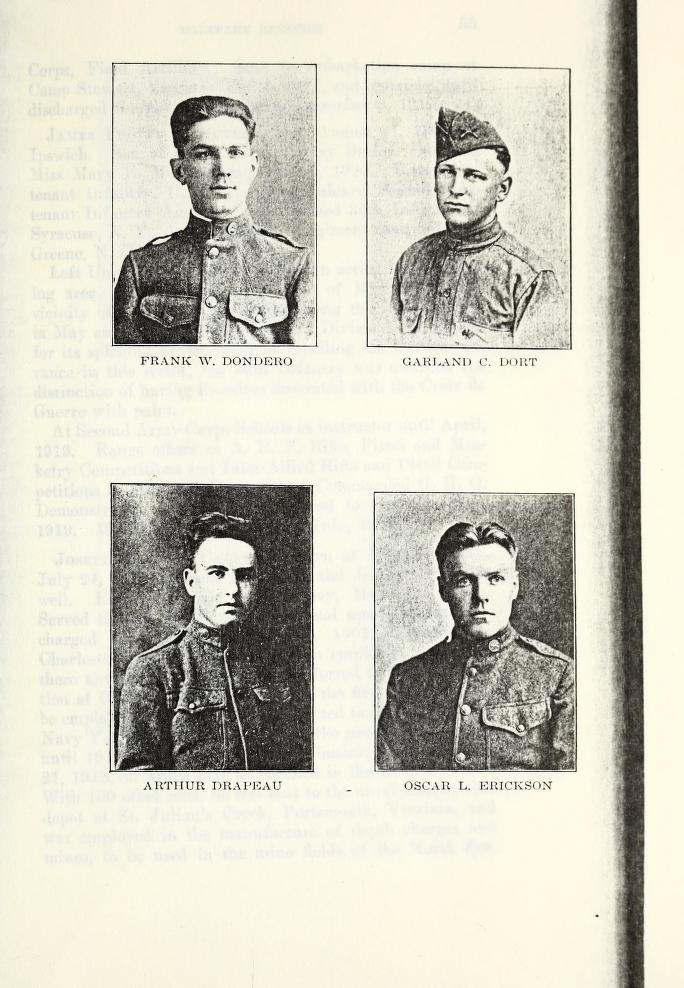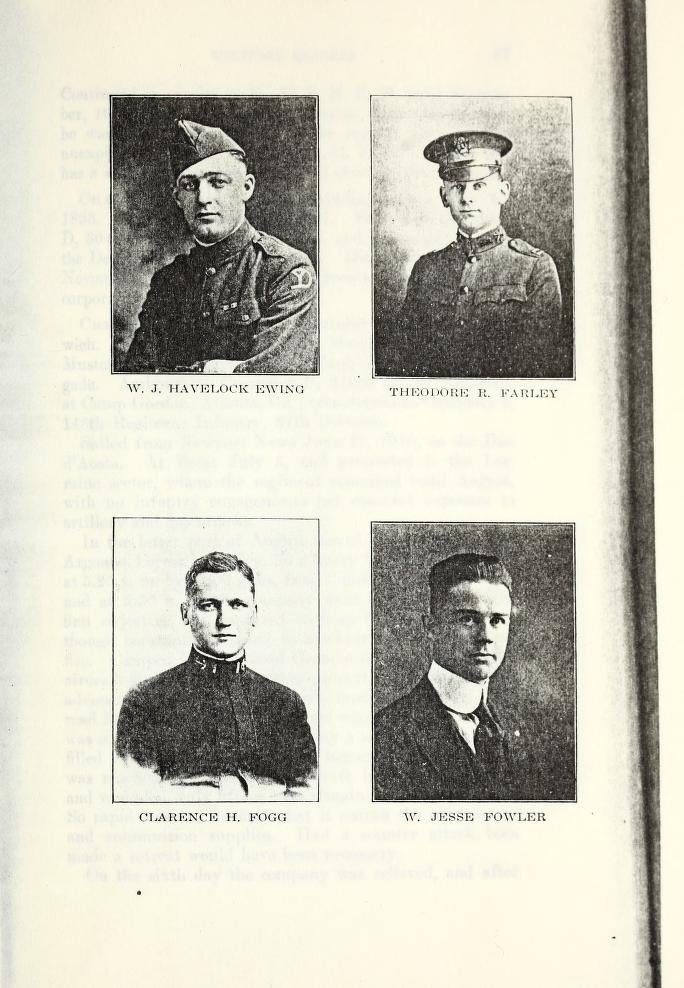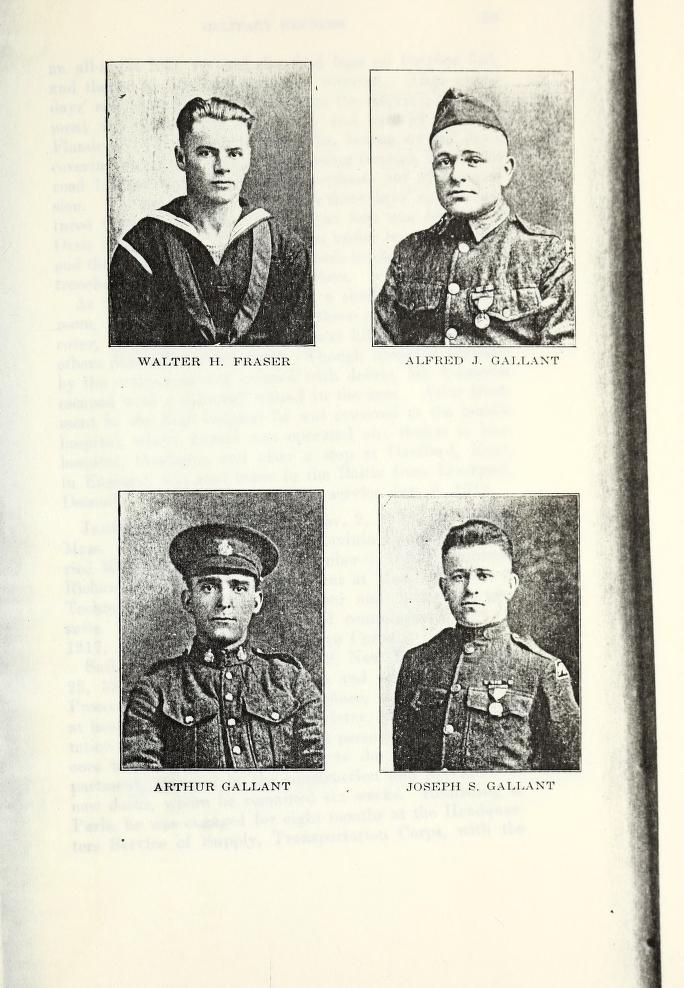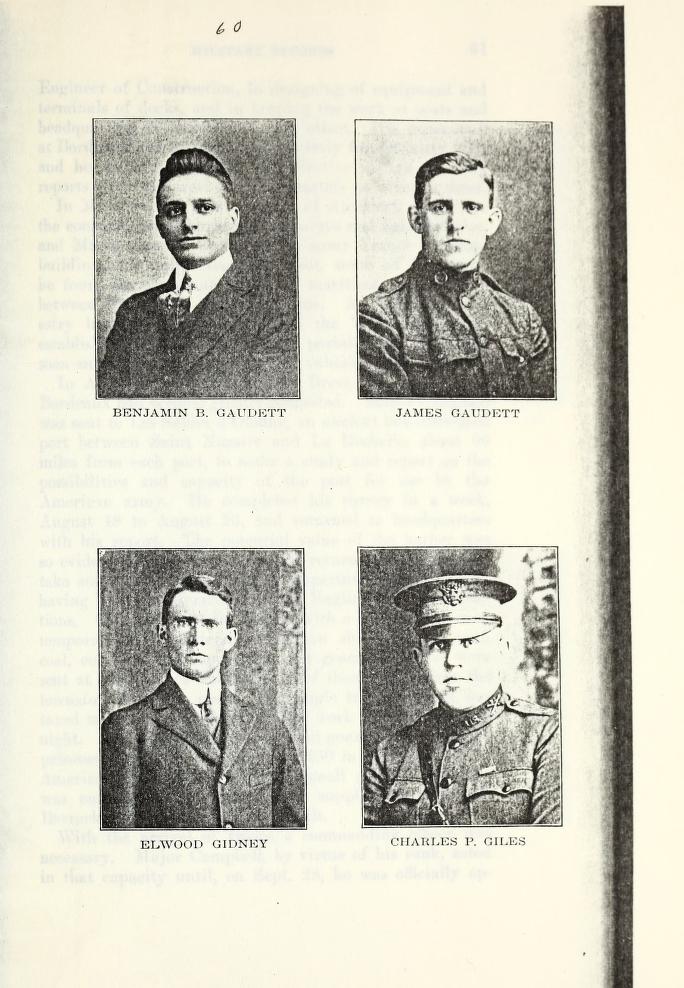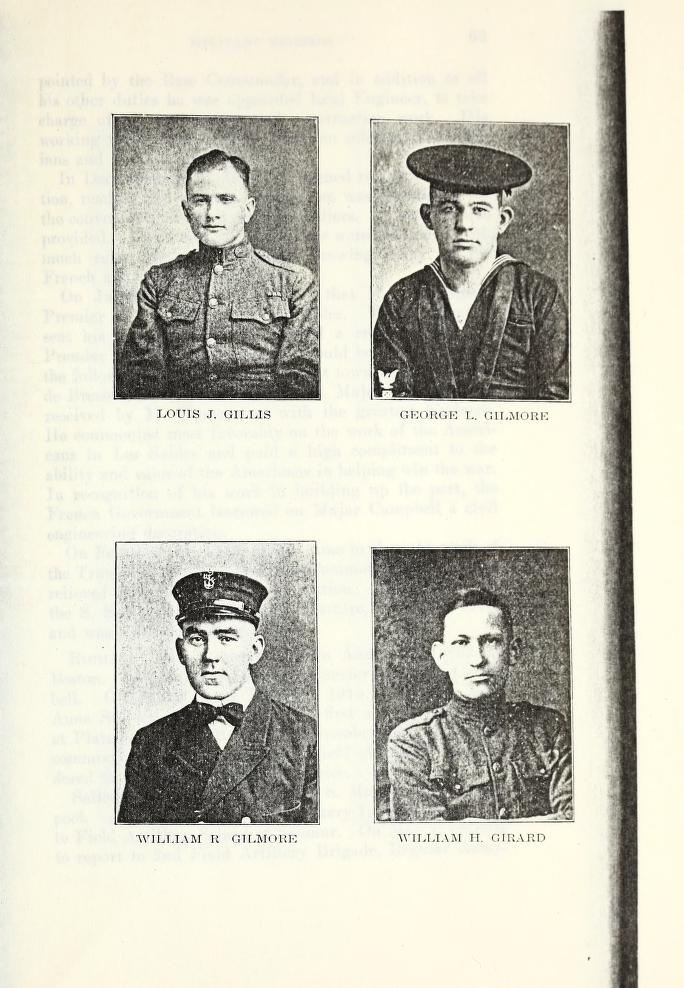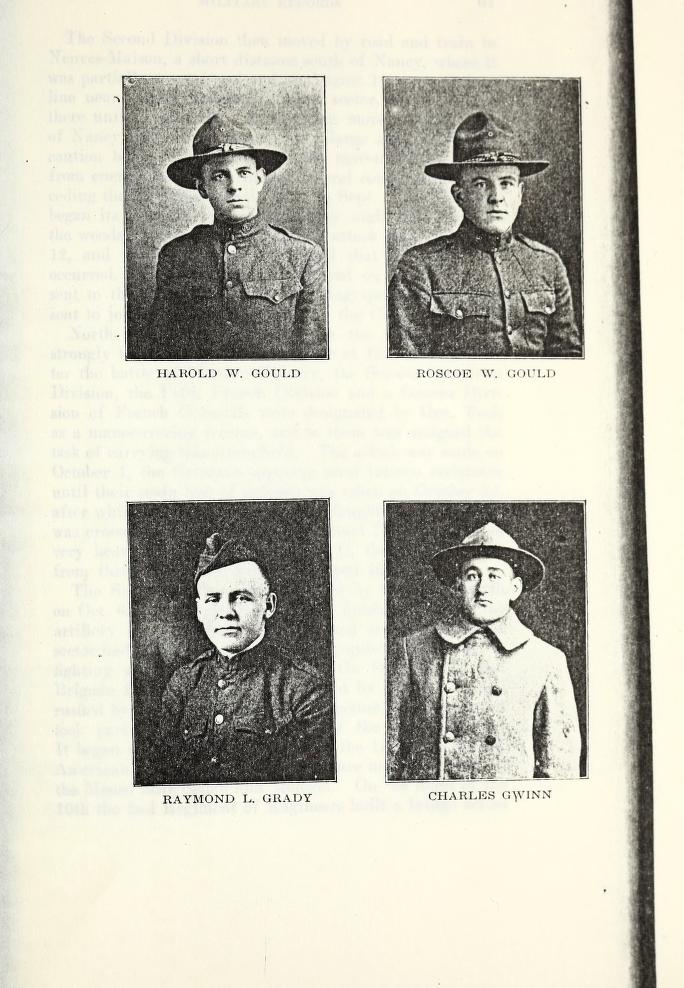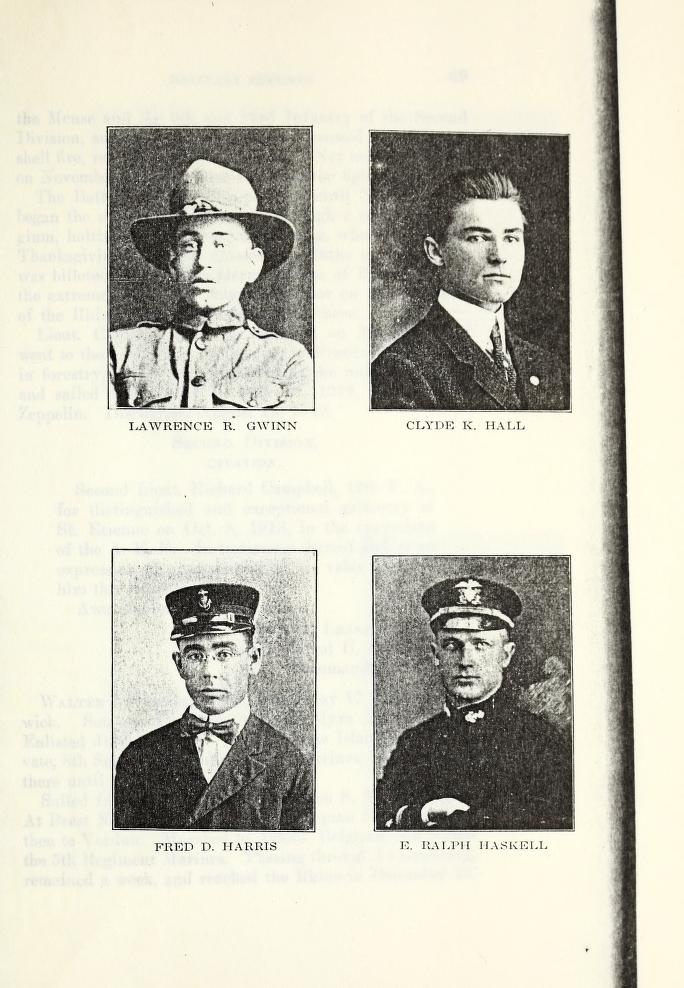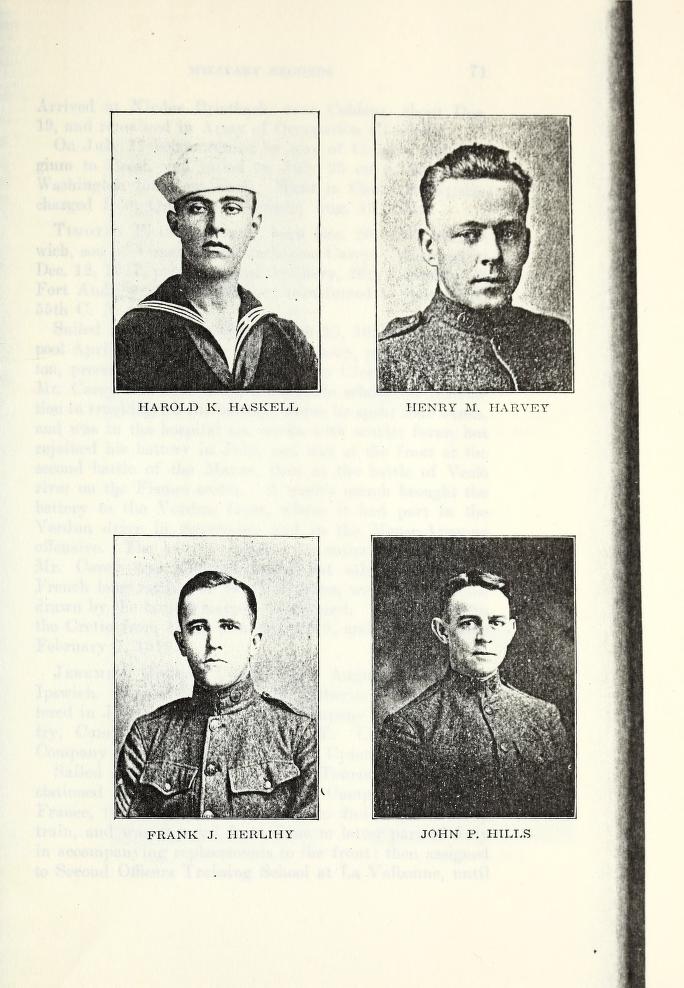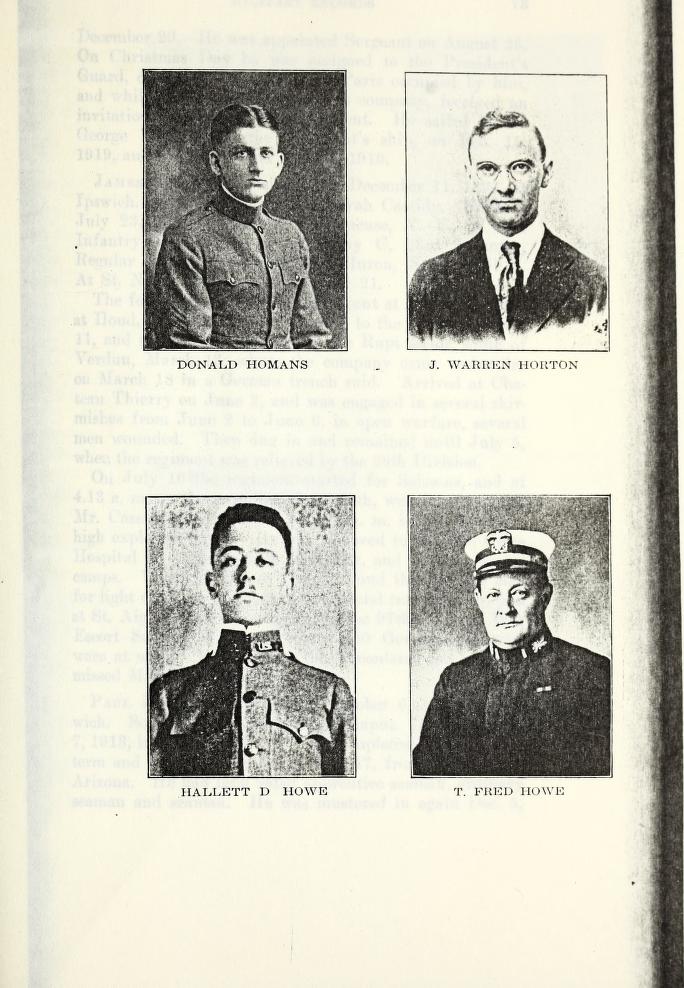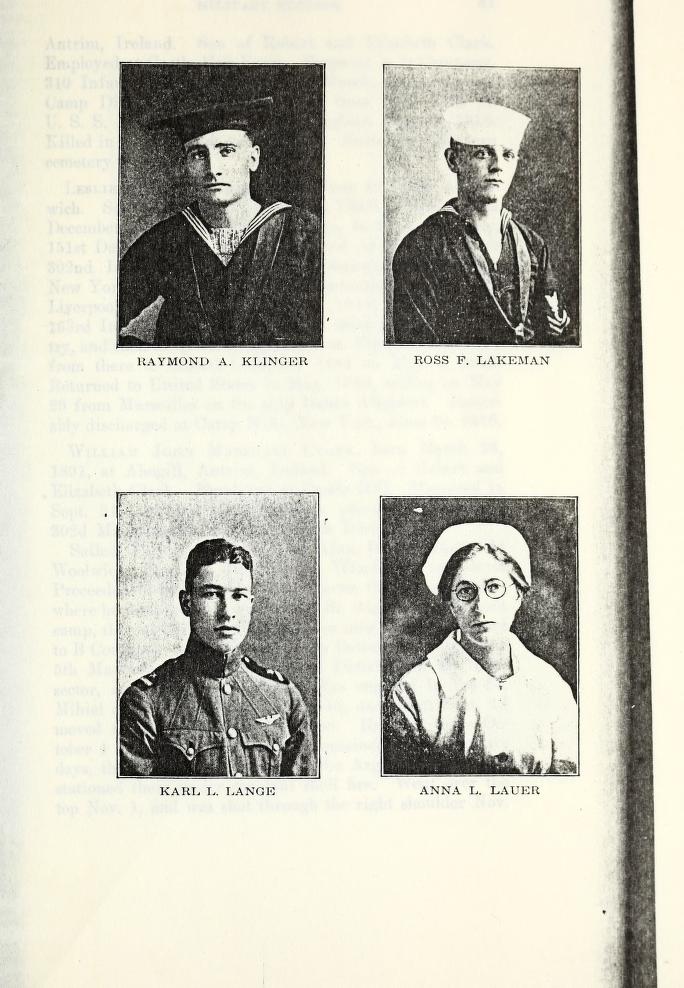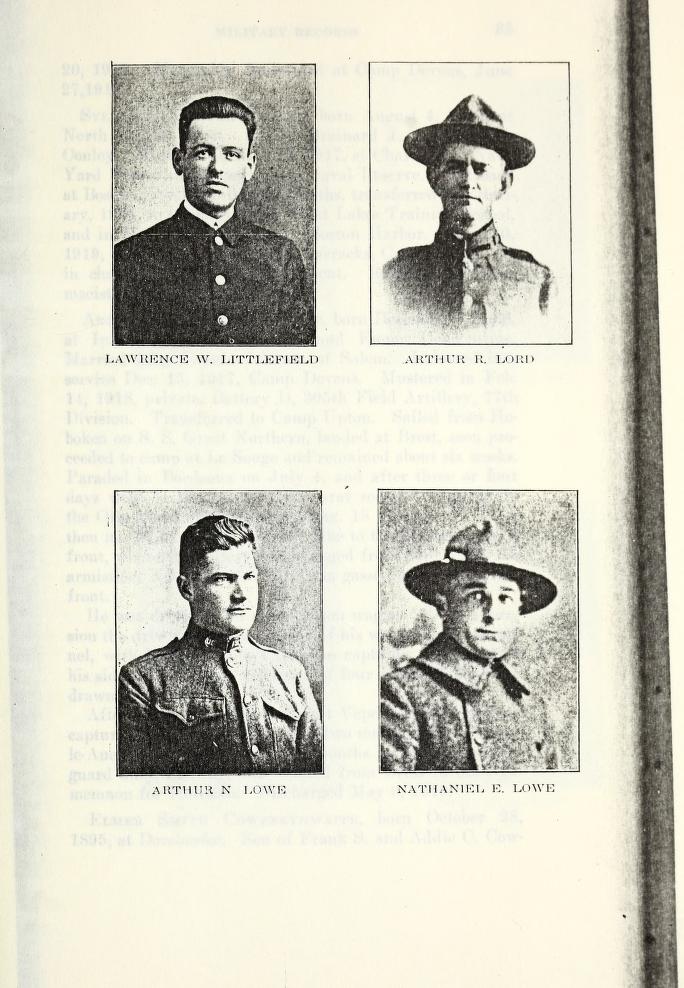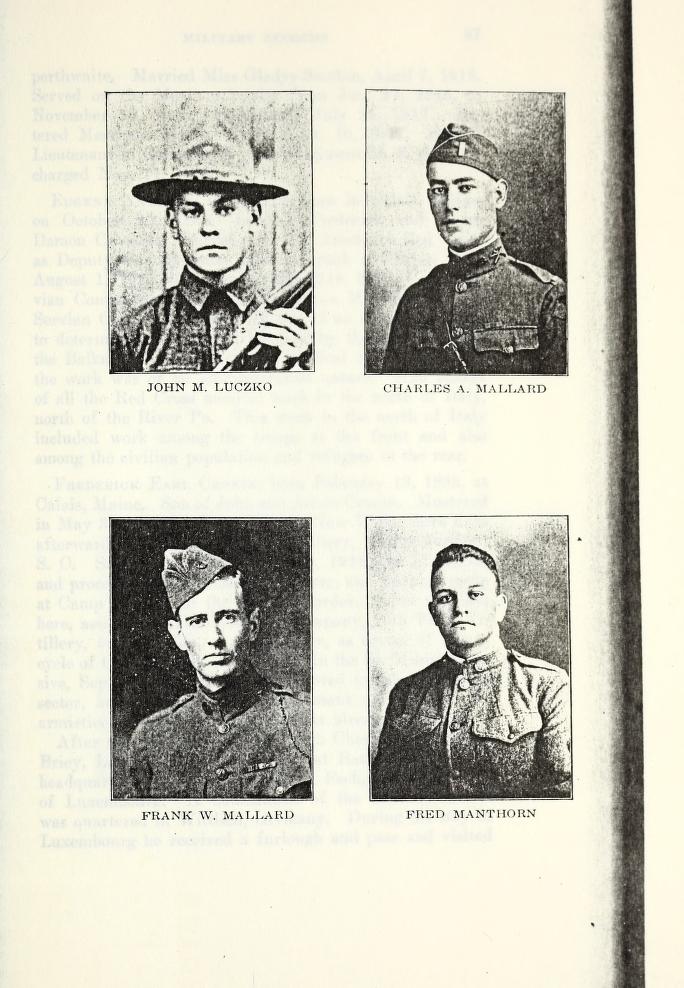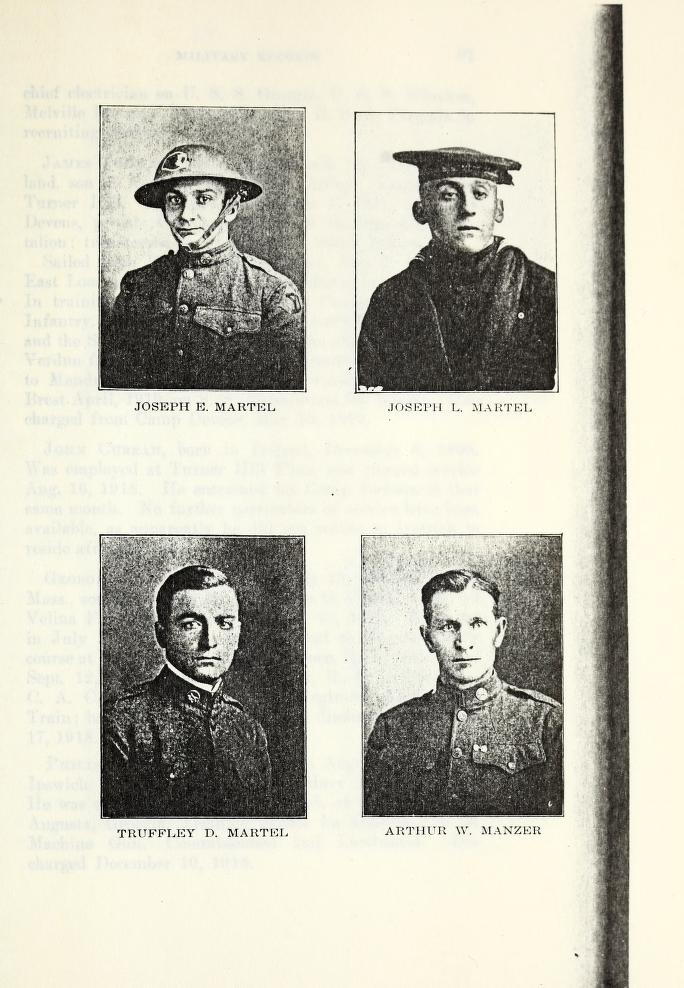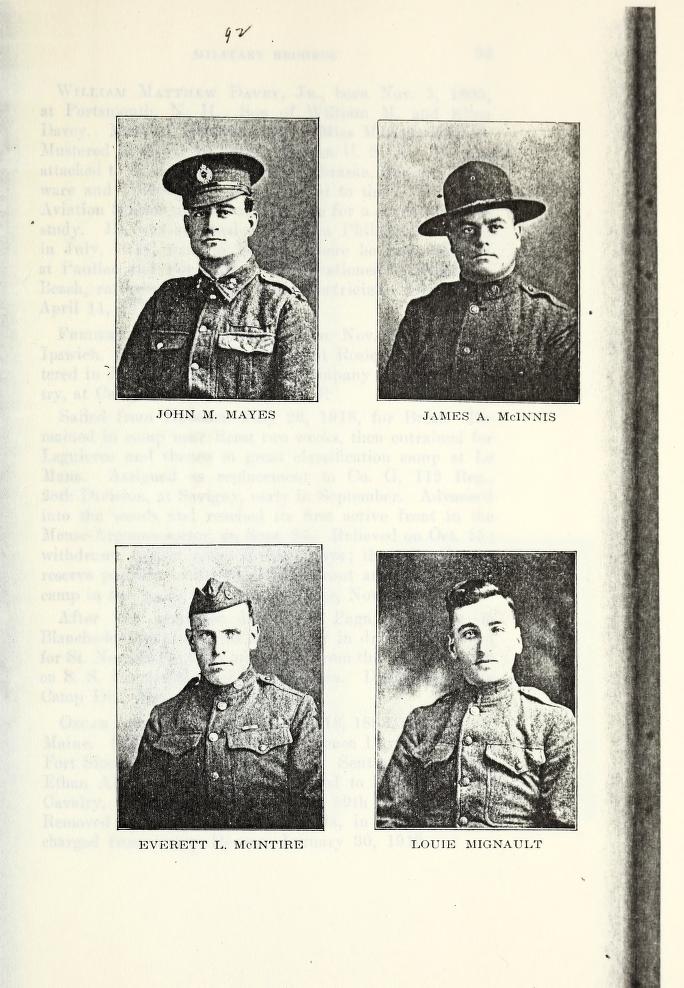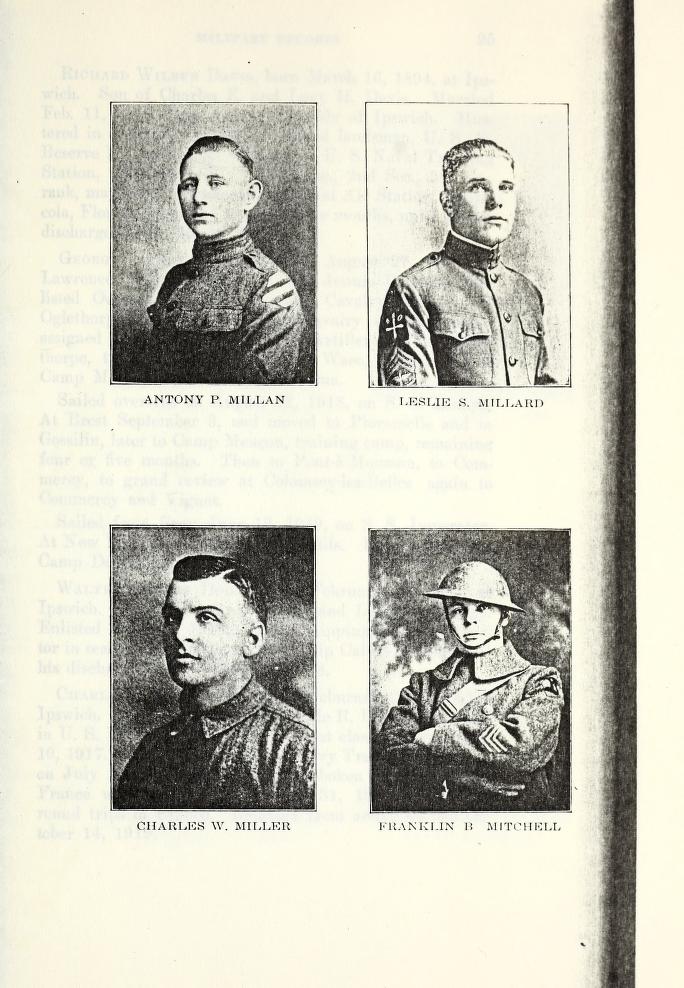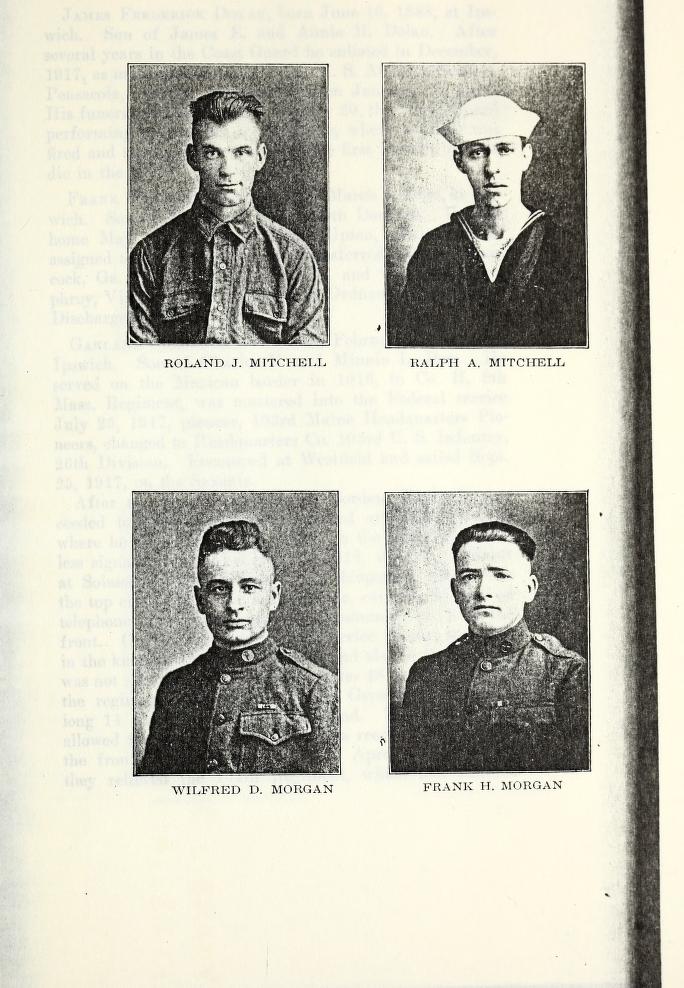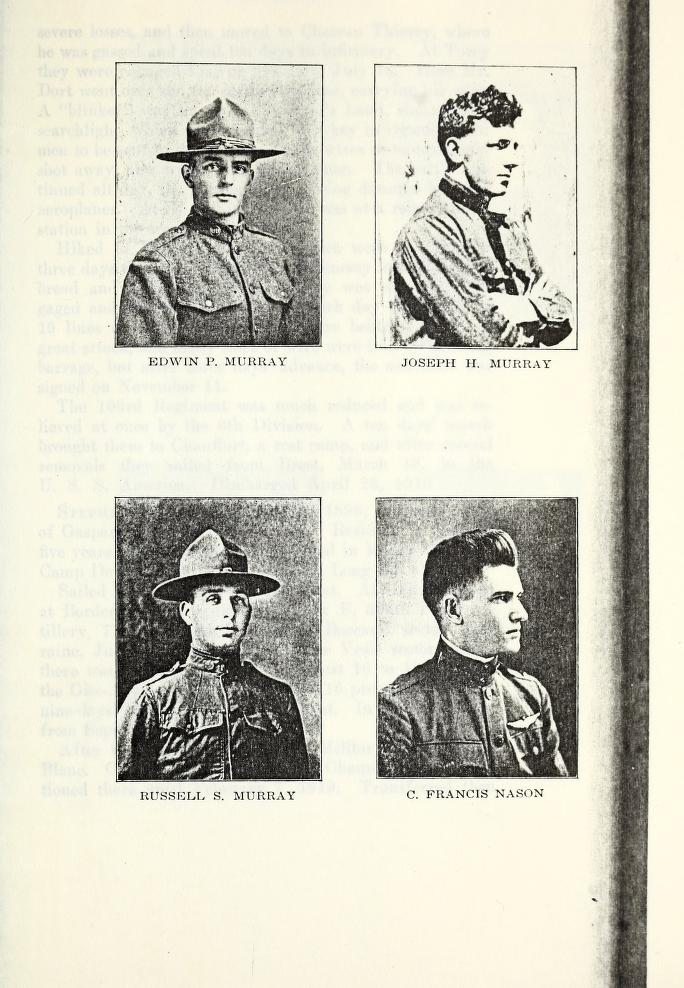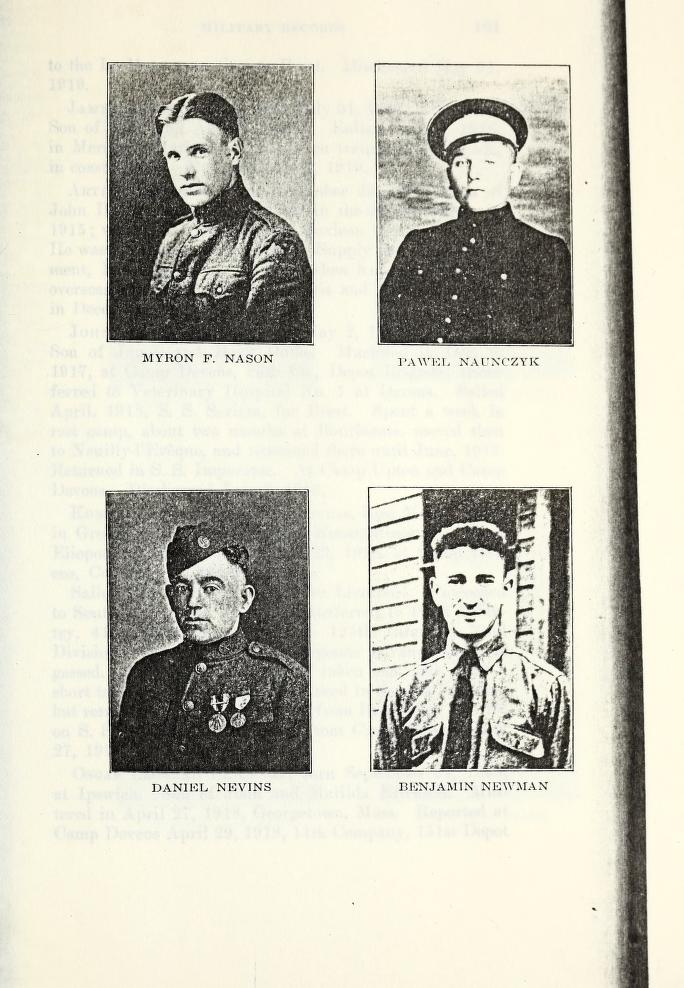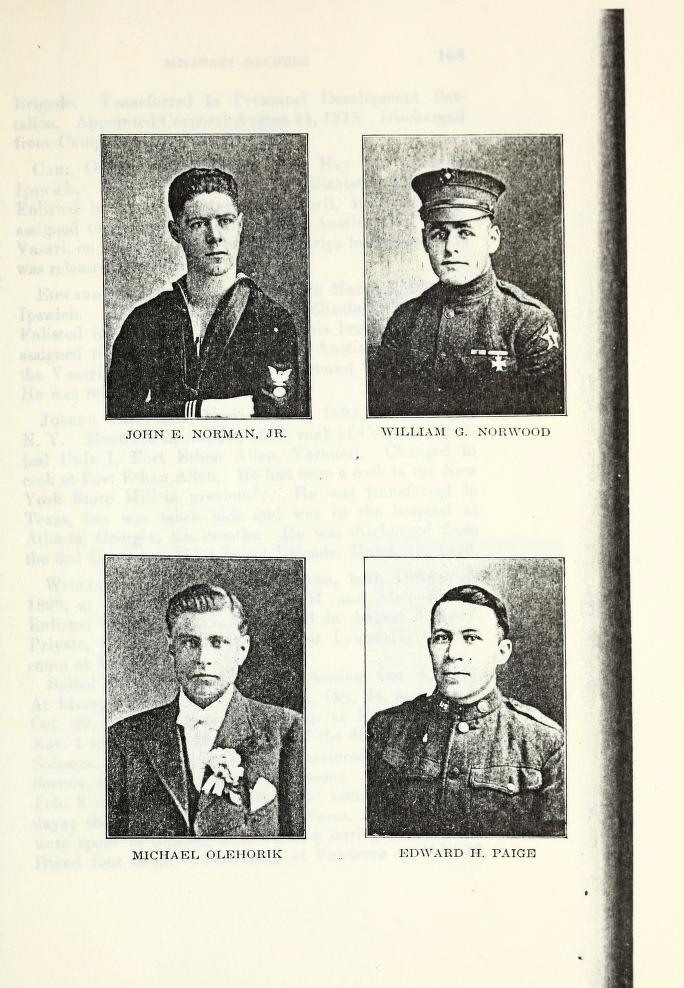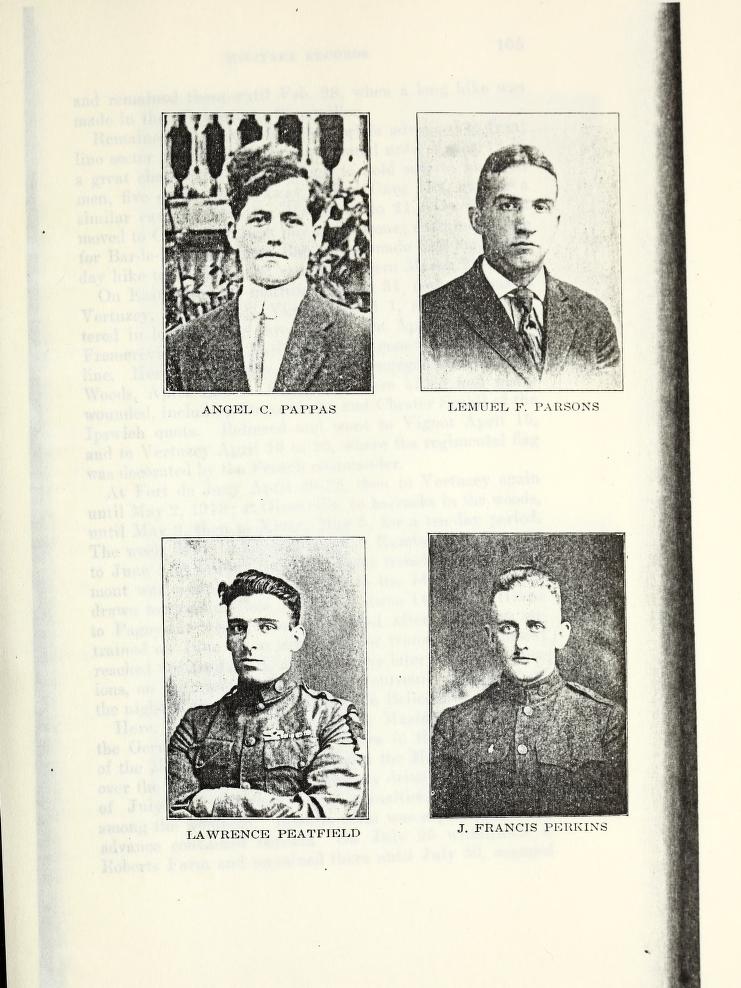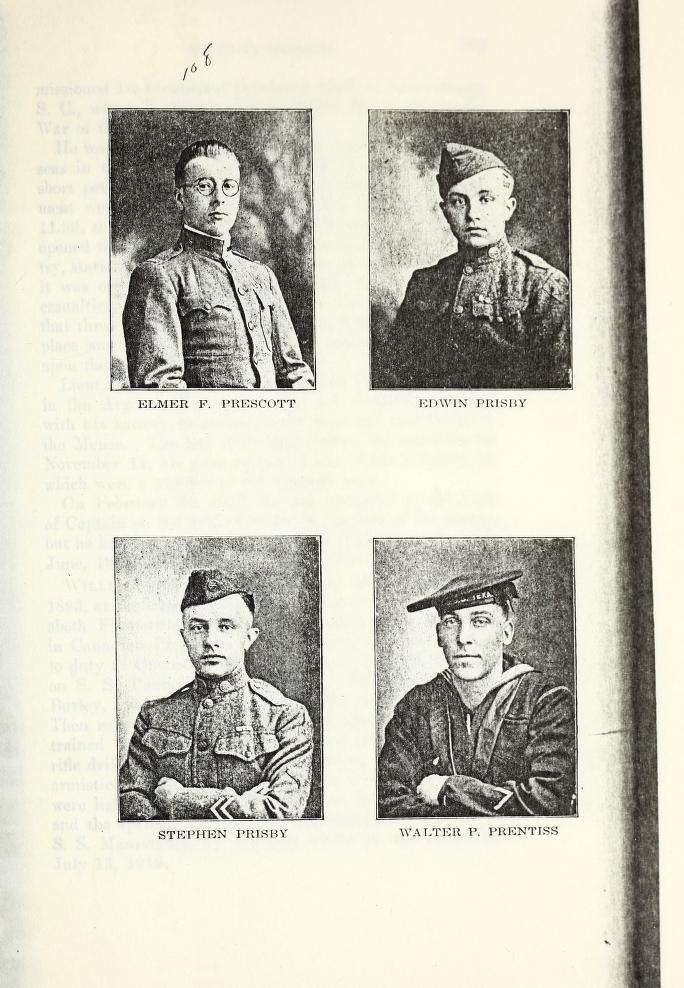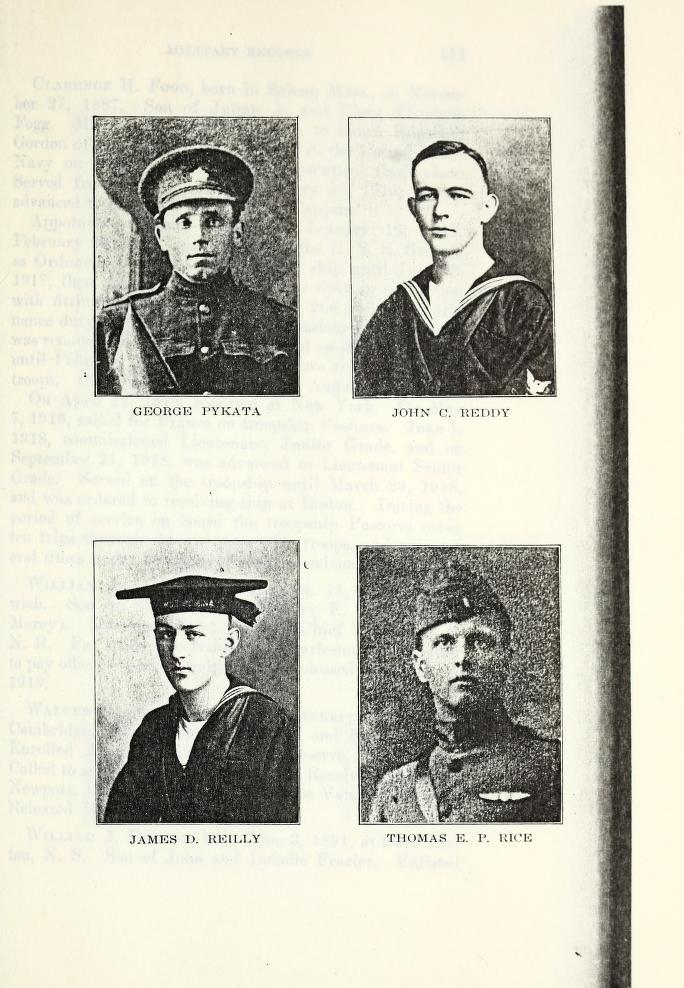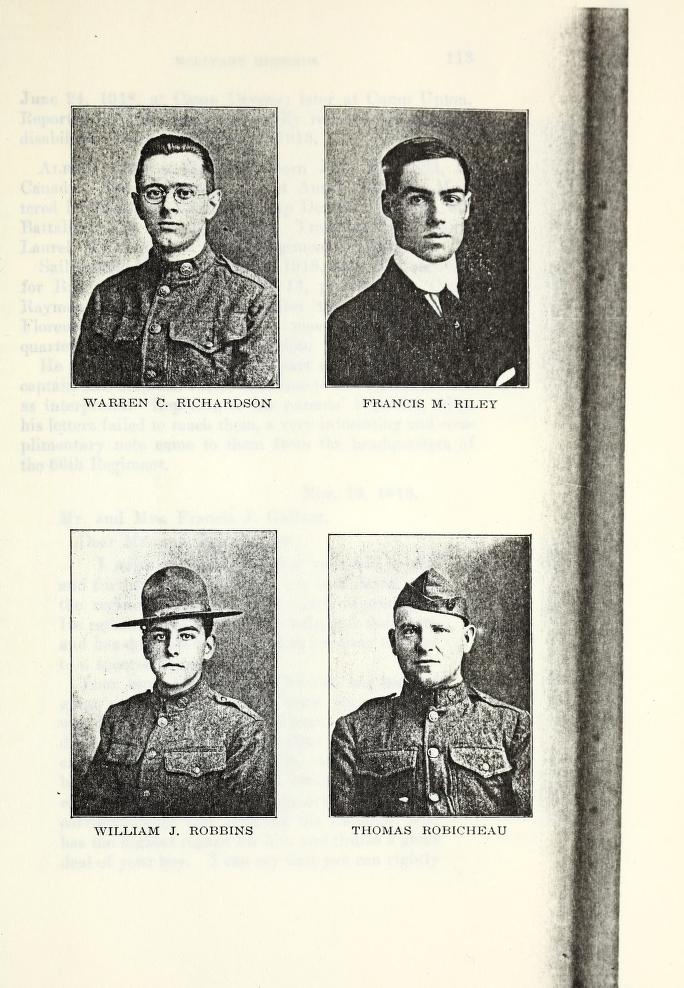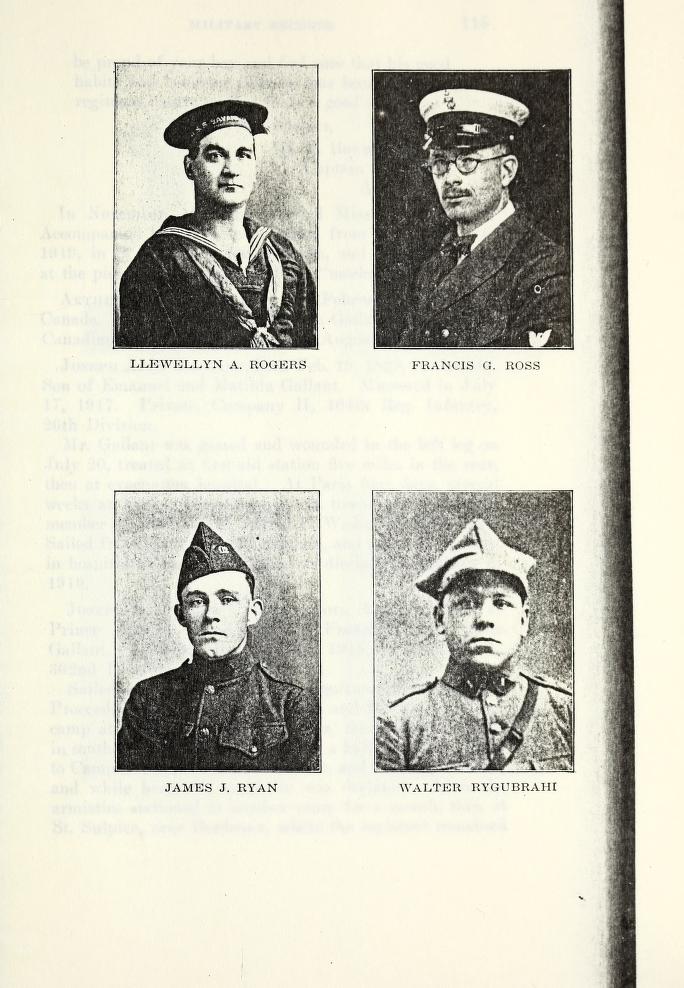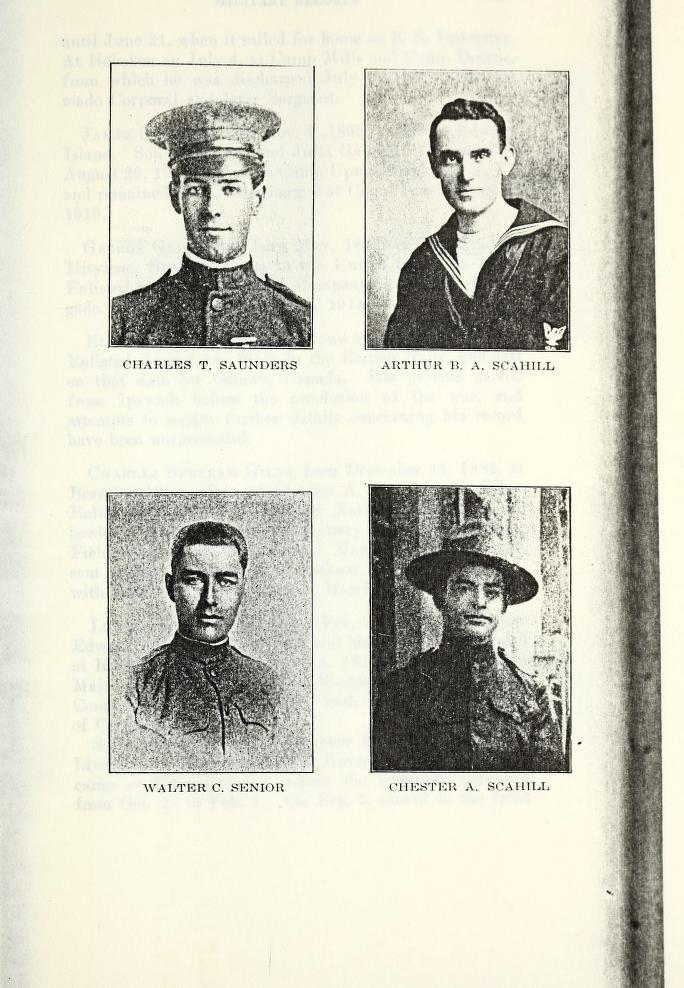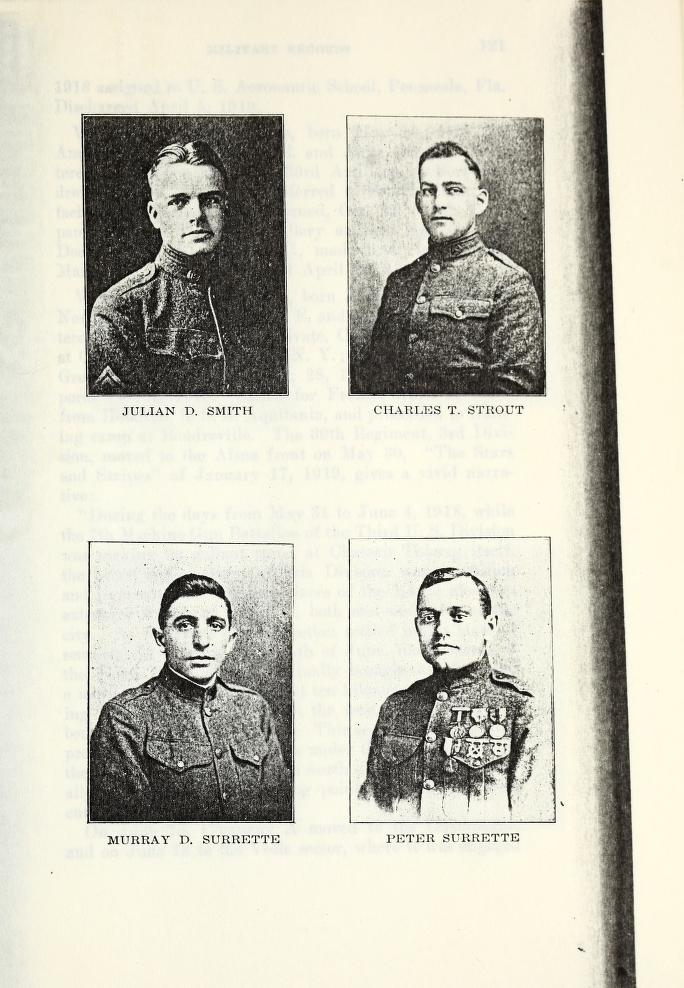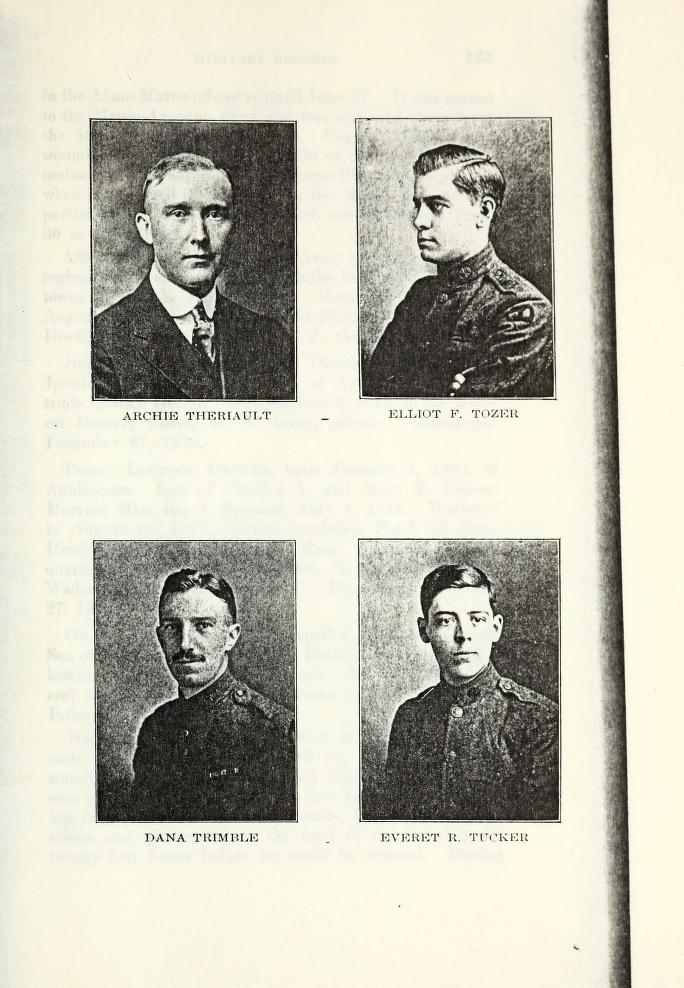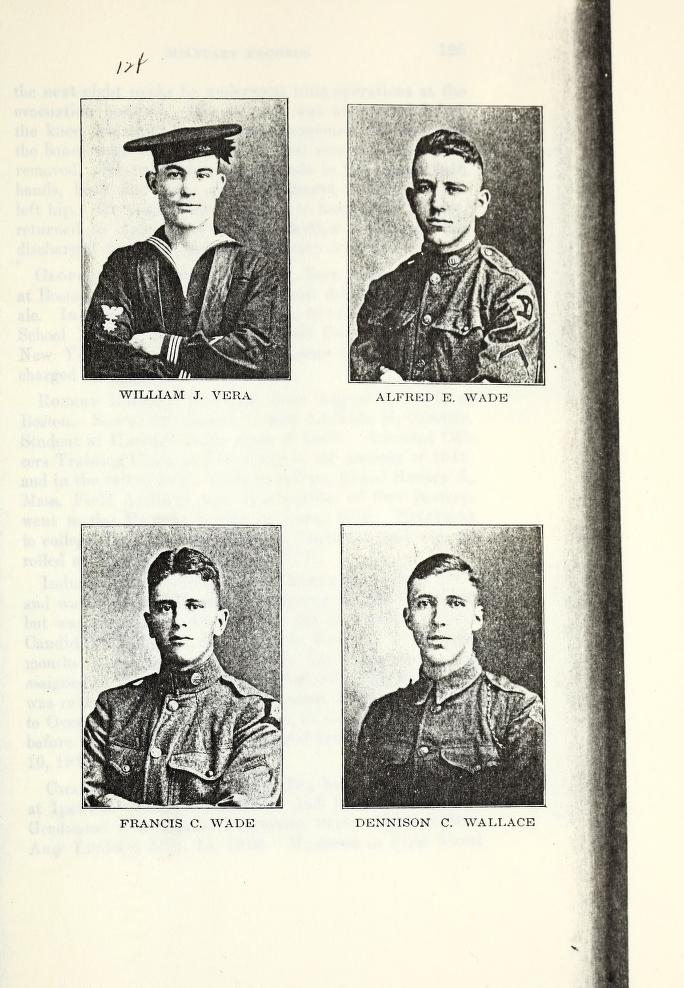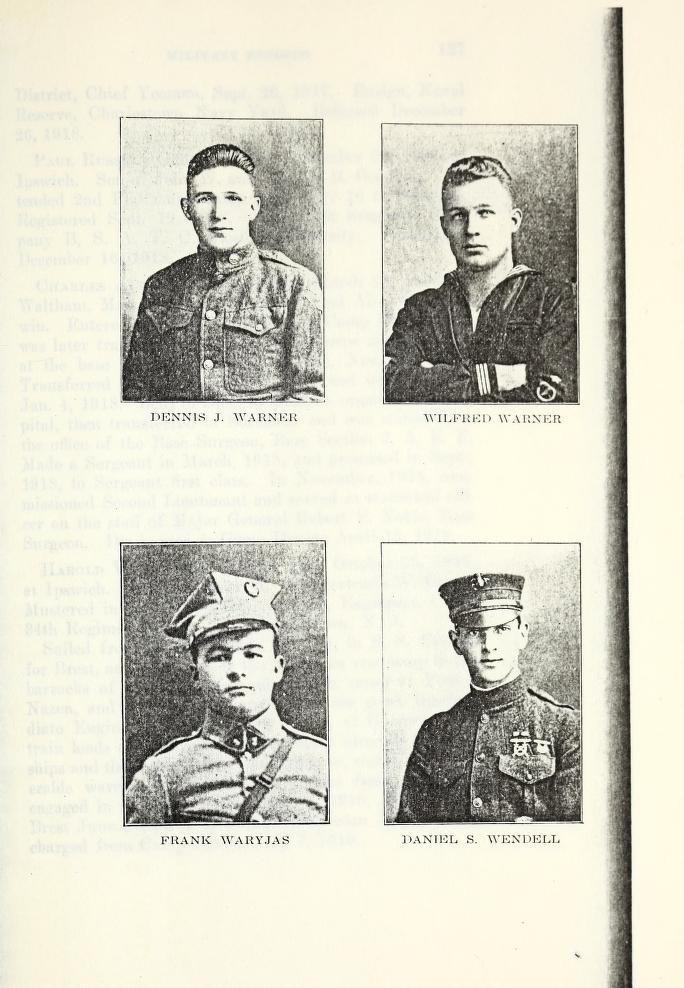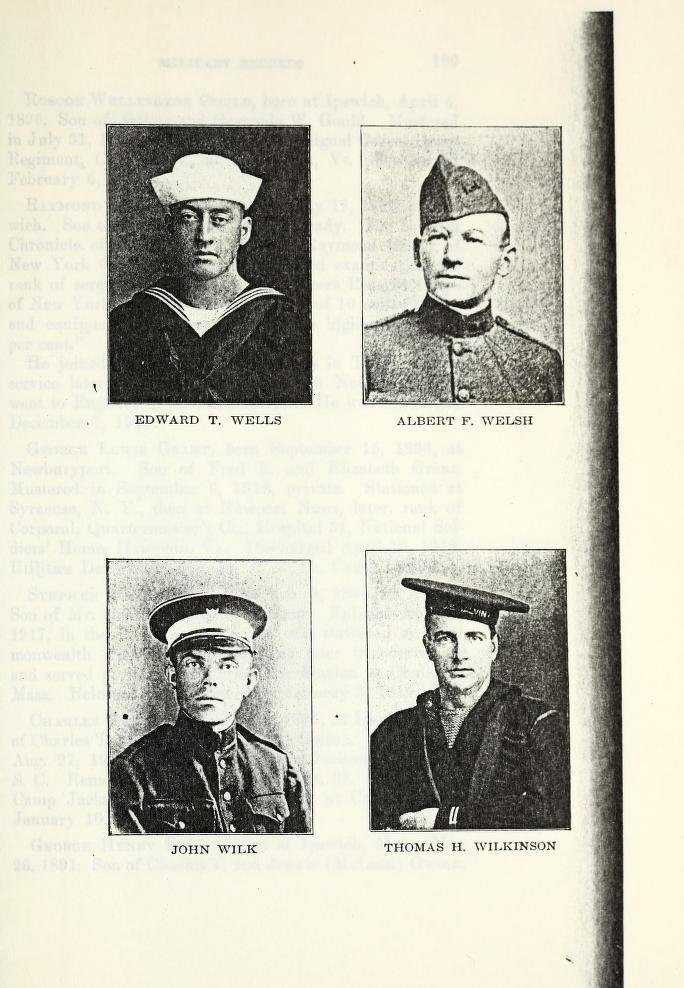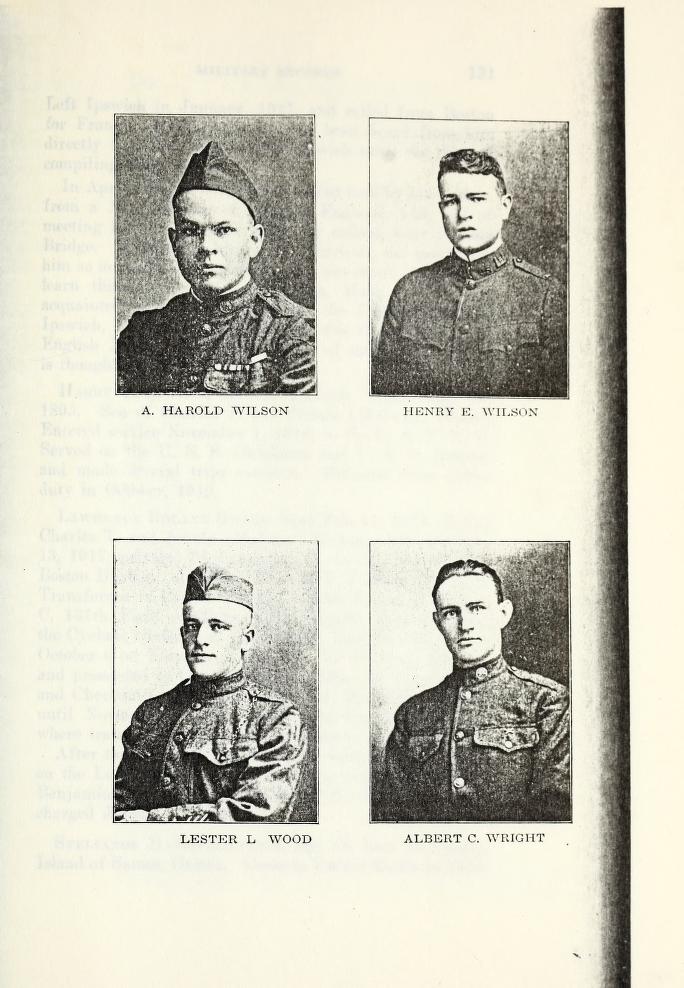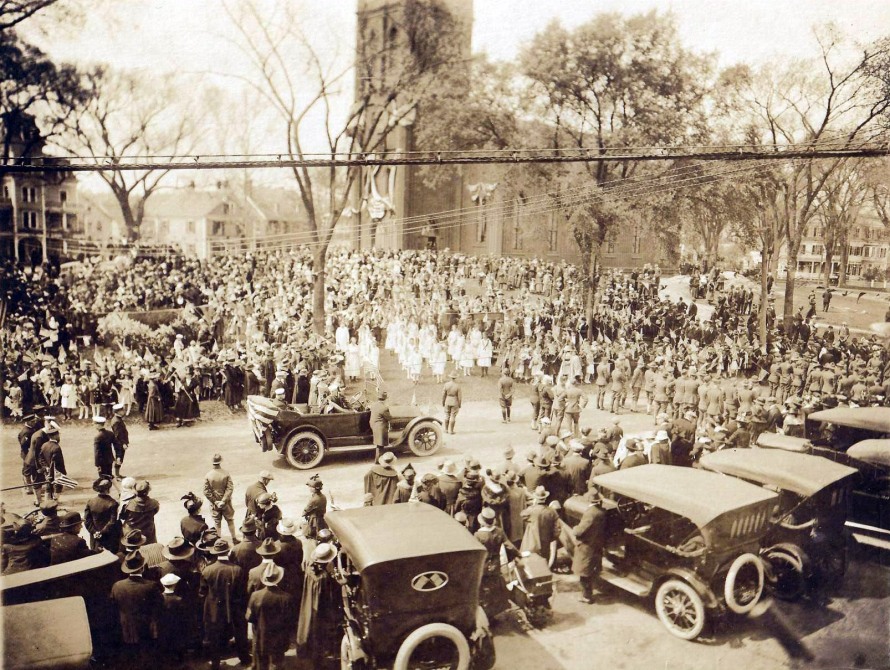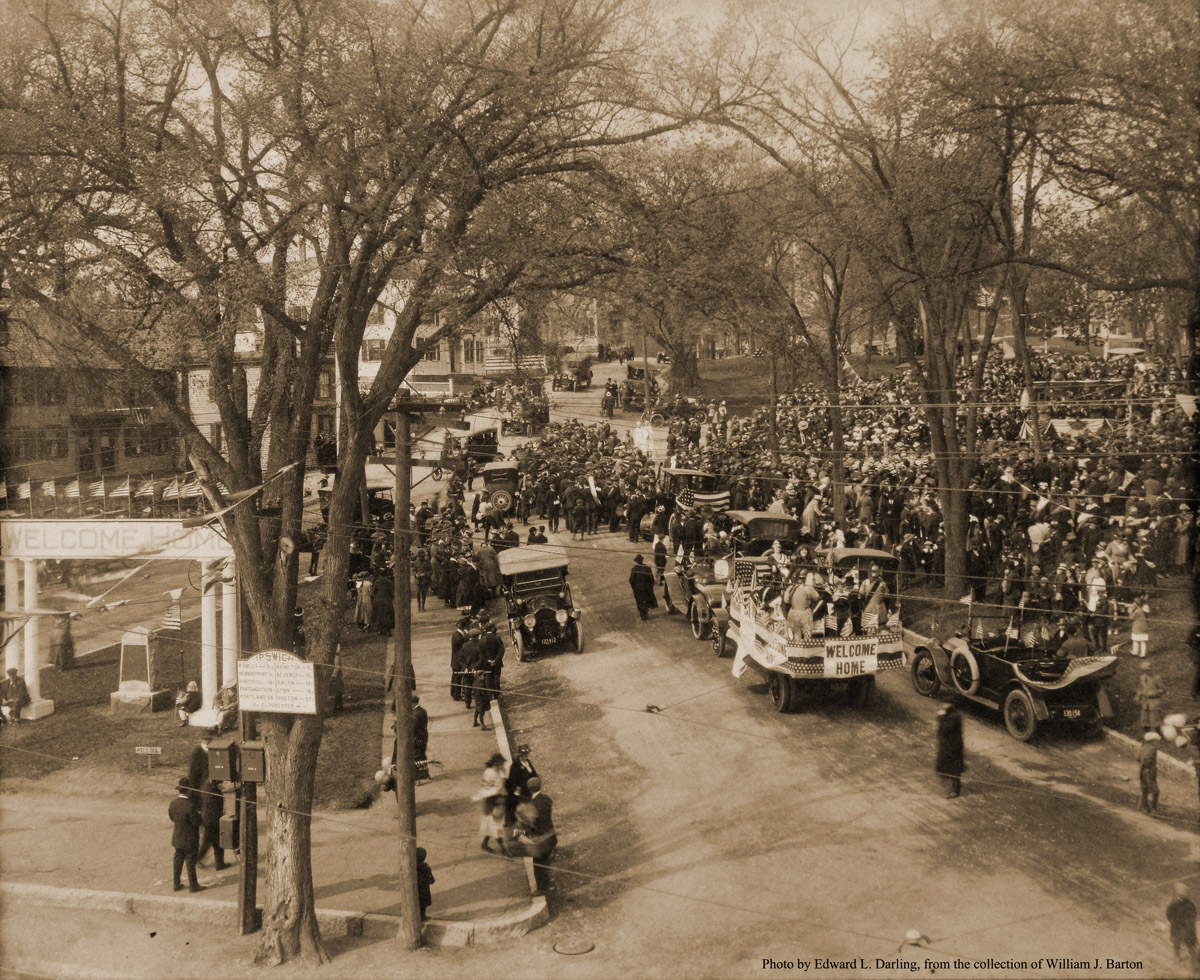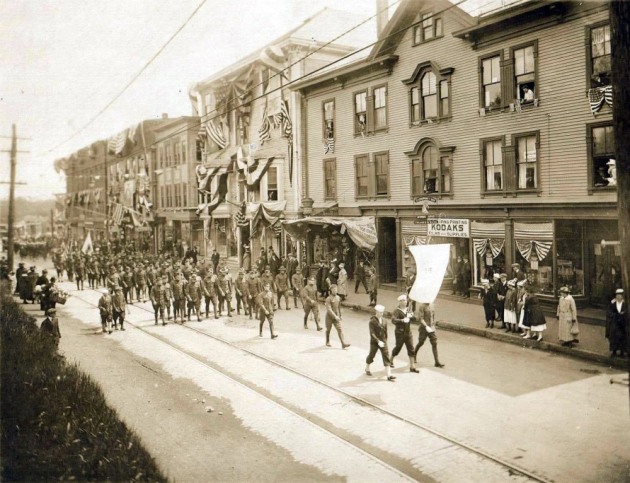Chronicles of Ipswich in the War 1917-1918
by Thomas Franklin Waters for the Ipswich Historical Society
A largely attended ”Military Mass Meeting” was held in the Ipswich Town Hall on Friday evening, March 30th, 1917. Sergeant Myers of the Regular Army, Major Thomas Walsh, Sergeant Hammond of Co. H, 8th Mass. Regiment, Lieut. McDade and others made patriotic addresses, advocating preparedness for the war that seemed inevitable, and urged the young men to enlist in the Home Guard.
On April 4, 1917, the Senate of the United States voted, 82 to 6, that a state of war existed between Germany and the United States, and the House of Representatives passed a similar vote on April 6, 373 to 50. The President signed the Declaration of War immediately. By the middle of April, the young men were enlisting rapidly. The Ipswich Protective Volunteers, a company organized for local protection, numbered by May, and weekly drills in the Town Hall were conducted.
A public meeting was held to organize a local branch of the Red Cross. The First Liberty Loan was opened for popular subscription in May 1917, the Government called for $2,000,000,000 to be raised, with interest at 3 1/2 percent, exempt from all taxation except estate or inheritance taxes, and exchangeable for any subsequent issue at a higher rate. The Ipswich apportionment was $120,000.
REGISTRATION DAY, JUNE 5, 1917
By the Federal Conscription Act, all males between the ages of twenty-one and thirty-one inclusive, resident in the United States, were obliged to register with the Registrars of Voters on Tuesday, the fifth day of June 1917. Whistles and bells were sounded a full minute in the morning to give notice of the great event. Promptly at seven o’clock, the registration began. 671 men registered of which 347 were aliens and 324 were native-born or naturalized, or had declared their intention to become citizens.
Off to War
As July drew to its close, the young men of Ipswich were slipping away to the various camps in different branches of the service. On the morning of Wednesday, July 25, 1917, when the Company II men took an early train for Lynnfield, many friends waved their adieus at the station.
With much ceremony and due solemnity, befitting an event of such momentous interest to a vast number of the young men of America, the draft numbers were drawn by lot at Washington, on July 20 and 21 of the significant figures. The Ipswich Chronicle of July 27, 1017, published the first 85 numbers that touched the Ipswich registrants. Ipswich was included in the 21st Draft District.
On September 21, 1917, early in the morning, the drafted men from Ipswich went to Georgetown by automobile with the Ipswich Mills Band. There they were joined by the drafted contingents from the other towns of the District. The whole squad, numbering 68 men, then returned to Ipswich. The line of parade was formed in Lord’s Square, headed by a tile of police and the Ipswich Band, and escorted by about 800 school children and their teachers, each one carrying a flag. A great crowd of citizens accompanied the men to the train, and on the spur of the moment, hats were passed and nearly $200 was collected and given to the departing soldiers. The train left with enthusiastic cheering and the band playing ” America.” Almost 200 Ipswich men served during the War.
ARMISTICE
On the afternoon of Thursday, November 7, 1918, a rumor spread through Ipswich that an armistice had been arranged. Immediately the church bells were rung and whistles blown, with the accompaniment of firecrackers. This celebration was premature, but definite news of the end of the war was received on Monday morning, November 11. Ten blasts on the fire alarm whistle proclaimed the news, church bells began to ring, whistles were blown, the mill announced that a holiday was granted to the operatives, stores were closed, all business was suspended, and the streets were filled with people. By 8 am, an impromptu procession began parading through the principal streets, and a bonfire was lit in Market Square. The bells rang continually during the day and for a large portion of the following night.
The great public celebration took place on Tuesday, led by the State Guard, which included lodges and societies, the schools and fire department, and large contingents of the French, Greek, and Polish societies. The Kaiser was carried in effigy in a rough coffin on a wagon, and after the procession was dismissed in Market Square, the guardians of the Kaiser sold the privilege of driving a nail in his coffin to enthusiastic patriots. When he had been well-nailed the coffin and its contents were burned.
Men and Women in Service
Source: Chronicles of Ipswich in the War 1917-1918 by Thomas Franklin Waters for the Ipswich Historical Society
